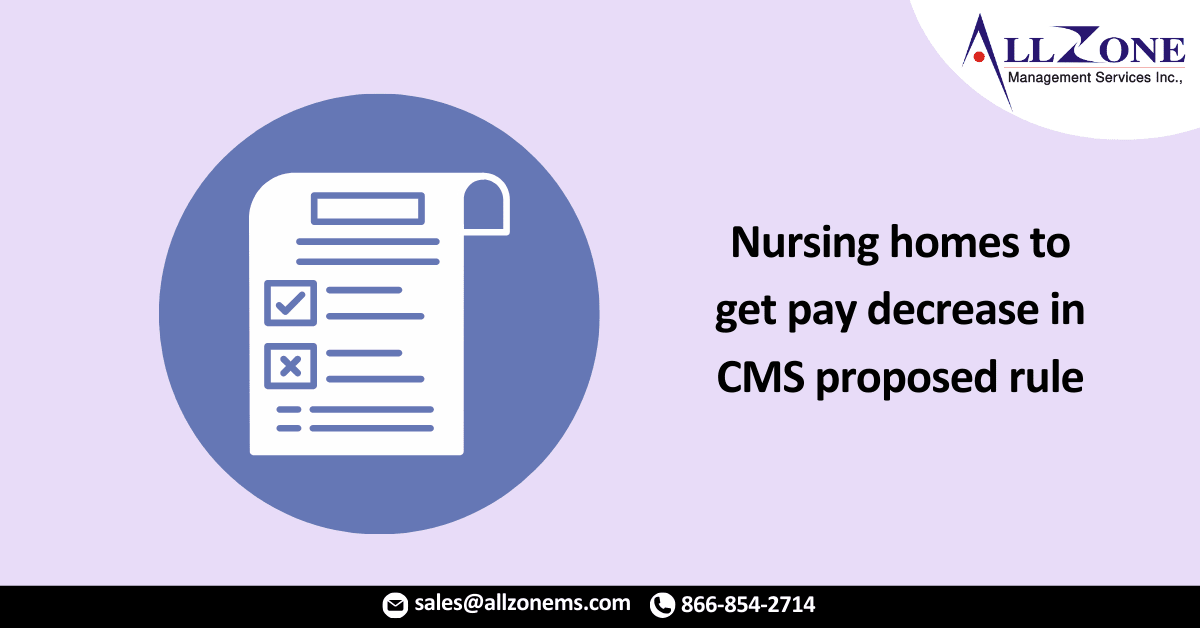The Centers for Medicare and Medicaid Services is proposing a decrease in skilled nursing facility payments by 4.6%, or $1.7 billion, in 2023 to achieve budget neutrality.
As a result, there will be a decrease of approximately $320 million in Medicare Part A payments to SNFs in 2023, compared to 2022.
This estimate reflects a $1.4 billion increase from the 3.9% update to the payment rates, which is based on a 2.8% market basket update plus a 1.5% market basket forecast error adjustment and less a 0.4 percentage point productivity adjustment, as well as a negative 4.6%, or $1.7 billion decrease, as a result of the proposed recalibrated parity adjustment.
CMS said these impact figures do not incorporate the Skilled Nursing Facility Value-Based Purchasing program reductions for certain SNFs that are estimated to be $186 million in 2023.
WHY THIS MATTERS
The Skilled Nursing Facilities Prospective Payment System proposed rule contains a proposed adjustment to payment rates as the result of the transition to the skilled nursing facility payment case-mix classification model, called the Patient Driven Payment Model, which went into effect on October 1, 2019.
CMS said the transition to the model would not result in an increase or decrease in aggregate SNF spending but since implementation, data analysis has shown an unintended increase in payments. CMS data shows an unintended increase in payments of 5%, or $1.7 billion, for 2020.
In 2022, Medicare is projected to provide $35 billion to over 15,000 nursing homes, serving more than 1.5 million people.
Through the proposed rule, CMS said it is continuing to transform the payment system to a more patient-centered model by making payments based on the needs of the whole patient, rather than focusing on the volume of certain services.
STAFF TURNOVER
The Biden Administration has set a goal to improve the quality of nursing homes through addressing staffing levels.
In the proposed rule, CMS is soliciting input to help the agency establish minimum staffing requirements.
This input will be used in conjunction with a new research study being conducted by CMS to determine the optimal level and type of nursing home staffing needs. The agency intends to issue proposed rules on a minimum staffing level requirement for nursing homes within one year.
CMS is also requesting stakeholder input on a measure that would examine staff turnover levels in nursing homes for possible inclusion in CMS’ SNF Value-Based Purchasing Program, which rewards facilities with incentive payments based on the quality of care they provide to people with Medicare.
Looking at the relationship between staff turnover and quality of care, preliminary analysis by CMS has shown that as the average staff turnover decreases, a facility’s overall rating on CMS’ Nursing Home Five Star Quality Rating System increases, which suggests that lower turnover is associated with higher overall quality.
CMS will use the stakeholder feedback to inform a proposal of this measure to include in the SNF VBP Program in the future.
In January, CMS began posting nursing home staff turnover rates (as well as weekend staff levels) on the Medicare.gov Care Compare website, and CMS will be including this information in the star rating system starting in July 2022.
HEALTH EQUITY
To advance health equity and address the health disparities that underlie the U.S. healthcare system, CMS is requesting stakeholder feedback on the role health equity plays in improving health outcomes and the quality of care in nursing homes.
Specifically, CMS is seeking comment on how to arrange or classify measures in nursing home quality reporting programs by indicators of social risk to better identify and reduce disparities.
The proposed rule released Monday proposes the adoption of three new measures into the SNF VBP Program including: the Skilled Nursing Facility Healthcare Associated Infections Requiring Hospitalization outcome measure; the Total Nursing Hours per Resident Day structural measure that uses auditable electronic data to calculate total nursing hours per resident each day; and the Adoption of the Discharge to Community – Post Acute Care Measure for SNFs outcome measure, which assesses the rate of successful discharges to community from a SNF setting.
THE LARGER TREND
As of February, more than 200,000 long-term care facility residents and staff have died due to COVID-19, according to the Kaiser Family Foundation.
“The COVID-19 pandemic has highlighted serious problems at some of the nation’s nursing homes that have persisted for too long. And we have seen the tragic impact that inadequate staff resources can have on residents and staff,” said CMS Administrator Chiquita Brooks-LaSure.
ON THE RECORD
“Everyone deserves to receive safe, dignified, and high-quality care, no matter where they live,” said Health and Human Services Secretary Xavier Becerra. “Today we are starting the necessary work to ensure our loved ones living in nursing homes receive the best care at the staffing levels they need. We are working hard to deliver on President Biden’s commitment to protecting seniors and improving the quality of our nation’s nursing homes.”
For More Information: nursing homes get pay decrease cms proposed rule

